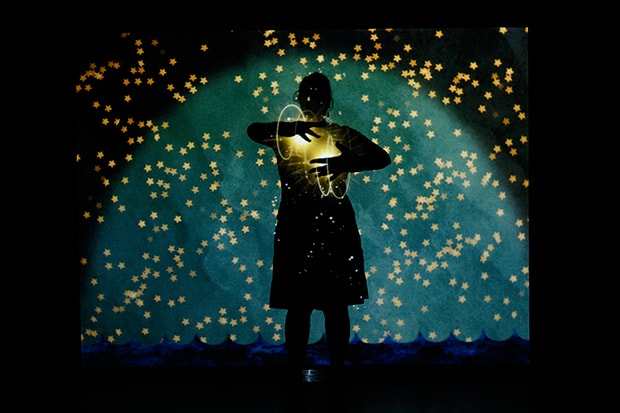Affect-Capitalism, Digital Cinema, and Social Difference
A decade ago, Luciana Parisi and Tiziana Terranova articulated what has come to be a relatively common characterization of digital-image cultures, and particularly digital cinema: that “the cybernetic rewiring of vision in digital culture presents an intensification of the material qualities of the image.”1 They ascribe a particular kind of action to digital images—and a particular desire: “In their different genres and modalities, digital images seem to have a common denominator: their desire is to take over the real, to involve and overwhelm us to the point where we will no longer be able to discriminate between referent and sign.”2 Finally, they insist that “an engagement with the materiality of the image … should be part of a cybernetic feminism that is able to face up to the challenges of contemporary visual cultures.”3
Parisi and Terranova’s piece was one of a number of counterresponses around the turn of the millennium to a digital theory which had hitherto often conceived the digital in terms of flatness and disembodiment, as well as in relation to Jameson’s notion of a postmodern “waning of affect.”4 In the subsequent decade, as affect theory has exploded across media and cultural studies, so has the sense that far from waning, affect has intensified, and that thus, far from being flat and disembodied, digital images are, as Parisi and Terranova assert, producing new forms of embodiment determined by corporeal immersion and overwhelming sensation.
In a field beset by multiple and often conflicted definitions of its central term, I should clarify the particular conception of affect that I am working with here. It is one which was initially developed by Gilles Deleuze, most centrally through his work on Spinoza, and which has subsequently been extended by Brian Massumi, Steven Shaviro, and Patricia Clough, among others.5 What is at stake in this concept of affect is the subrepresentational, presubjective or asubjective dimensions of perception and feeling. Shaviro provides a concise definition of affect and its relationship to emotion:
affect is primary, non-conscious, asubjective or presubjective, asignifying, unqualified and intensive; while emotion is derivative, conscious, qualified and meaningful, a ‘content’ that can be attributed to an already-constituted subject. Emotion is affect captured by a subject, or tamed and reduced to the extent that it becomes commensurate with that subject. Subjects are overwhelmed and traversed by affect, but they have or possess their own emotions.6
Emotion is produced as a subject gathers and figures a set of perceptions and affects, naming them joy, pleasure, fear, irritation, etc., and thus inscribing them in subjectivity’s unfolding narrative. What is most important about affect for our purposes here is that it is always just beyond the control threshold of the subject—the subject is “traversed by,” but doesn’t “possess” affect. In fact, when we are speaking about affect, there are no subjects; there are only ongoing processes of subjectivization.
It is for this reason that Parisi and Terranova, while citing feminist film theory as an area in which the “relationship between bodies, images and reality” has been centrally engaged, also strongly critique it, in fact, assert that its methods “have now come to preclude a more productive engagement with digital aesthetics.”2 They argue that its focus on representation and reality, identity and identification—that is, its concern with how images produce and/or mediate subjectivity and identities—assumes a subject or self that is precisely what is cast into question by the desubjective or asubjective processes of affect. An affective space is “post-linguistic” and “post-semiotic,” a field of forces, speeds, and slownesses in which we do not know what a body is—or what a body can do—in advance. It is precisely the field in which new bodies and new forces to affect and be affected are always in production.
It is important to locate the affective coordinates of digital images within a larger field of forces: At a moment “where capitalism is more about scouting and capturing or producing and multiplying potentials for doing and being than it is about selling things,” our vitality and affective capacities become the very substance of capital. Brian Massumi describes this as the “subsumption of life” under capitalism, arguing that, “it’s to the point that our life potentials are indistinguishable from capitalist forces of production.”7 Thus, the affective qualities of digital images do not run counter to the mode of contemporary capitalism and consumer culture, but rather represent a special case within it, one which—in the move toward multiple sites of media convergence—is often found in combination with other forms, including video games, television, and experiments with virtual realities.
In the conclusion to their piece, Parisi and Terranova pose a series of questions, including: “What is a woman in an affective space as compared to an emotional space?” “How can the relative autonomy of digital images from regimes of representation and identification help us to understand the position of women within cybernetic control?”8 While I want to echo here their call for a feminist theory that can help us engage the new coordinates of the spectacular regimes of affect capital, the form that these question take can only cause our common project to flounder. In my view at least, there are no affective spaces separate from emotional ones, and there are no “women” outside of “regimes of representation and identification.” Affects subtend and potentialize identities and realities—they in-form and exceed them—but they don’t exist in a wholly separate domain. It is the capture and codification of affect that produces emotion, and that both de- and re-forms subjectivities. If we want to understand what a man or woman is, or how each is in-formed, de-formed, and re-formed, we need to attend to the interplay between perception, sensation, affect, identification, and subjectivity. We are clearly not living in a postgender or postracial age. What is the case is that molar identities—of all kinds—are increasingly subject to molecular interventions, both quite literally and more figuratively speaking, and we are only now creating the concepts that can help us to address the molecular, affective modes of our contemporary culture.
What I will do here is examine a set of figures that can help us to think the space in between the presubjective, asubjective, or extrasubjective forces of affect and the developed representational concepts of the “subject:” of “man,” “woman,” “black,” and “white,” etc. I call these intermediate sites phantasms. My use of this term is neither coincident with its psychoanalytic referent, nor with its supernatural one (though it shares with ghosts, specters, and unconscious phantasy the status of mediating between spheres). I have, rather, adapted it from Deleuze’s discussion of the logic of sense and phantasmatic simulacra (as Deleuze in turn developed it from the corpus of the Scholastics, including Duns Scotus and Henry of Ghent). What I intend it to refer to here is any figure of mediation that operates between the domains of sensation and affect on one side and representation and understanding on the other.
Avatar Bodies
The film is set in the future, and its protagonist hero, Jake Sully (Sam Worthington), a paraplegic former marine, is on his way to the planet Pandora where he will take the place of his dead twin brother in a special project. The RDA company is on Pandora to mine a highly valuable mineral, unobtanium, and Jake is to join Dr. Grace Augustine (Sigourney Weaver) and her team of scientists, who have been hired by RDA to find a way to get a tribe of Na’vi—a 10-foot-tall, blue-skinned, cat-like, humanoid species who live in harmony with the natural environment—to relocate from an area the company wants to mine. The Pandoran environment is poisonous to humans, and in order to learn about the Na’vi—and persuade them to move—the scientists assume avatars, bodies created with half-human and half-Na’vi DNA, which they pilot remotely through a mental link. Jake has neither the scientific training nor the sophisticated education in Na’vi language and culture that the other avatar drivers do, but to Grace’s dismay, he has been chosen for the project because his DNA matches the avatar that had been created for his dead twin. While Grace is unimpressed by Jake’s credentials, RDA’s corporate administrator on Pandora, Parker Selfridge (Giovanni Ribisi)—who has also hired a mercenary military force in case Grace’s diplomatic solution should fail—is impressed.
It’s difficult not to see the film’s central technique as an allegory for the cinematic experience engendered by the film itself. In contrast to many other forms of contemporary convergent media culture, which are touted for their participatory features and their production of new categories of prosumers and produsers, this kind of immersive digital spectacle—no matter how exhilarating—depends on the classic physical immobility and passivity of the cinematic spectator. For Jake, as for the spectator, access to the sensational, visceral, corporeal experience of Pandora is dependent on acceding to a physical passivity. In order to drive their avatars, Jake and the others climb into coffin-like tubes where they must lie, completely immobilized, to make the mental link. So while the initial notion of the avatar may at first seem to conjure video games or online virtual environments like Second Life, in this case the human body does not actively manipulate its Na’vi counterpart, but rather must assume a position of absolute passivity in order to go on this interplanetary adventure. And insofar as Jake is a stand-in for the spectator here, the typical coordinates are intensified, even hyperbolized. In his real life, Jake’s body is broken, deprived of even normal capacities for mobility and movement, while as an avatar—and a Na’vi—he is taller, stronger, faster, and more able and agile than any human could be. Much of the film’s narrative focuses on Jake’s training as a Na’vi, which involves a combination of feats of leaping, flying, falling, and gliding—a kind of advanced, total-body course in hand-eye coordination. This physical training is accompanied by a tutorial in—or so we are supposed to believe—seeing the world through the eyes of the other, in this case the large, yellow, kitten-like eyes of an extra-terrestrial species. (The questions raised by this only apparently heteropathic identification, or other-identification, will become central to our analysis below.) The film thus entails a series of trials of physical mastery often involving extreme verticals and wild movements—leaping across branches of a forest canopy, or falling through them to reach the ground, riding a kind of extraterrestrial horse, and flying on the back of a prehistoric type of Pandoran bird while hunting other fantastic beasts—accompanied by lessons in the Na’vi’s pan-psychic nature-religion.
Jake’s training is paralleled by the spectator’s—the most obvious form this takes comes, of course, via the film’s stunning update of 3-D technologies. We wear 3-D glasses and negotiate novel forms of stereoscopy and depth perception. Where older 3-D films tended to achieve their most striking affects in projectiles—objects moving toward the spectators—Avatar uses its 3-D to create the experience of moving into and navigating through an ornately rendered deep-space cinema. The spectator enters the film through Jake’s point of view—a shot of flying through trees is accompanied by his voiceover talking about dreams of flying—and we are rarely separated from him throughout the 162 minutes of the film’s original theatrical run time, though the film tends most often to prefer the conventional over-the-shoulder shot to direct POV. The camera is also in some kind of movement much of the time. In a scene where Jake and Neytri embrace, the camera seems to float and pan around their kiss, even though it actually moves very little. There are sometimes broad, sometimes subtle mirroring links between the characters’ movements and the (virtual) camera’s. In the scenes where radical vertical spaces are traversed, the camera’s gaze emphasizes the vertiginous look down and the rollercoaster sensation of the ascent.
The film’s narrative follows Jake’s conversion experience. At first, although he works directly for Grace, he secretly reports to Col. Quartich, the head of RDA’s corporate army who has appealed both to his pride as a marine and to his aspirations: Jake has told us that while surgery to restore his spine and thus his normal mobility is possible, he can’t afford it on veteran benefits. Quartich promises him the surgery in trade for intel about the Na’vi. However, as Jake learns more and more about the Na’vi, their world, and their harmonious bond with nature, and as he forms a bond with his trainer and love interest, Neytiri, he switches sides. He leads the Na’vi in a fight against the white corporate exploiters and colonizers, and wins. Finally, he undergoes a native ceremony in which his human soul is transferred to his Na’vi body and he prepares to live on Pandora—as the Na’vi’s hero and leader—forever. At the end of the film, Jake gladly surrenders his broken, human body for his life as a tribal leader with a beautiful aboriginal princess by his side.
Like Dances With Wolves in one way and Pocahontas in another, the story of the white man who falls in love with a native princess and comes to lead her people to victory against a white oppressor is, unfortunately, a familiar one, but Avatar offers us the added feature of the avatar itself. That is, this narrative unfolds via a kind of vicarious immediacy, a living-through, which thematizes and enacts a particular kind of articulation of spectator, protagonist, spectacle, and world that blends cinema, video game, and virtual environment into a kind of idealized fantasy cosmos. We might compare this version of the avatar-spectator to the one presented in a Mark Neveldine and Brian Taylor film from the same year, Gamer. If Avatar is a disturbing orchestration of affect in the guise of an environmentally correct liberalism, Gamer, as Steven Shaviro has demonstrated, is almost a kind of opposite, an exploitation flick that contains—in its very hyperbole—a powerful social critique.9 A comparison of the two films shows Avatar’s seamless interface in juxtaposition to Gamer’s glitches and interference, and Avatar’s liberating vision of living through an avatar body to Gamer’s view of the same phenomenon as exploitative and cannibalizing. While there is one reference to potential glitches in the Avatar interface, we never actually encounter any. The avatar-bodies are specially designed to be used in this way, and they offer no resistance. Gamer emphasizes both the technical glitches in the avatar relationship, and the avatar-body’s resistance to being “played.” In Gamer, the avatars are real, live, flesh-and-blood people; some people are players and others are played, and class operates as one might imagine in such a scenario, with the haves as players, the convicts and the poor as avatars, and the rest as sex- and violence-thirsty spectators. Access to the networked spectacle is here explicitly thematized as moving through the affective labor of variously marginalized others, with life-and-death stakes.
What is particularly important for our analysis of Avatar here is the way that: (1) The film’s narrative involves the fusion of cinematic immersion, networked datasphere, and animistic world soul. In learning to navigate Pandora, one thus gets it all—a spiritual, neo-tribal belonging that entails an incorporation into a holistic energy network with the capacity for seamless links between human(oids), animals, and environment, and the uploading and downloading of data. (This particular blend of networked data, seamless interlinkings, and animistic world soul has, of course, been around at least since McLuhan.) (2) The spectator is aligned with the protagonist in an unusually direct fashion, as I will describe. Jake is our avatar, just as Jakesully is Jake’s. The film is thus as much about the spectator’s training regimen as it is about Jake’s. (3) In the space of Cameron’s particular version of this networked fantasy, raced and gendered bodies become abstract, commodified schemata available for consumption as digital affective experiences, in a very particular way—one that emerges from the new arrangements of immersive cinema and motion-capture performance.
- Luciana Parisi and Tiziana Terranova, “A Matter of Affect: Digital Images and the Cybernetic Re-Wiring of Vision,” Parallax 7.4 (2001): 124. [↩]
- Parisi and Terranova 2001: 123. [↩] [↩]
- Parisi and Terranova 2001: 124. [↩]
- Frederic Jameson, Postmodernism, or, the Cultural Logic of Late Capitalism (New York: Verso, 1991). [↩]
- See Patricia Ticineto Clough, “Introduction,” The Affective Turn: Theorizing the Social, eds. Patricia Clough and Jean Halley (Durham: Duke UP, 2007); Gilles Deleuze, The Logic of Sense, trans. Constantin Boundas and John Stivale (New York: Columbia UP, 1990); Brian Massumi, Parables for the Virtual: Movement, Affect, Sensation (Durham: Duke UP, 2002); Steven Shaviro, Post-Cinematic Affect(New York: Zero Books, 2010). [↩]
- Steven Shaviro, “Post-Cinematic Affect: On Grace Jones, Boarding Gate and Southland Tales,” Film-Philosophy 14.1 (2010): 3. [↩]
- Mary Zournazi, “An Interview with Brian Massumi,” International Festival n.d. [↩]
- Parisi and Terranova 2001: 125. [↩]
- Steven Shaviro, “Gamer,” Post-Cinematic Affect(New York: Zero Books, 2010). [↩]





